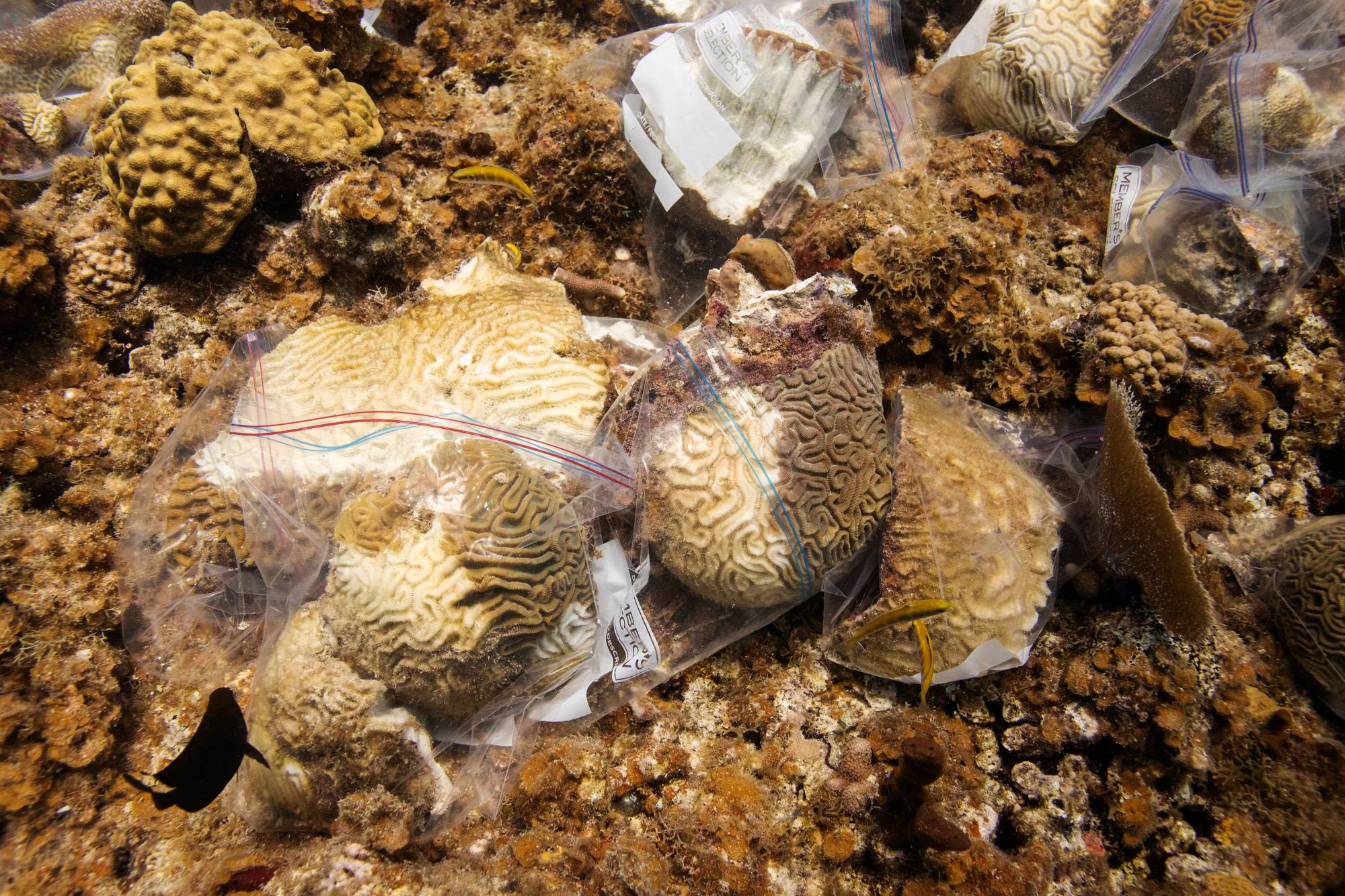Two years ago, Alizée Zimmermann could hardly name more than a few species of coral. But as a native of Turks and Caicos and a scuba instructor with thousands of dives under her belt, she knew something was wrong when she saw some of the islands’ oldest and largest corals disintegrating before her eyes.
"I saw a 20 foot tall pillar coral, probably two-, three-hundred years old, just peeling like if someone had poured acid over it,” she described later. She said her eyes welled with tears. "It was apocalyptic.”
She began taking pictures of the white lesions that appeared to be eating away the corals’ flesh and sent the photos to experts. Their diagnosis: stony coral tissue loss disease, which kills at least two-thirds of its hosts within months, if not weeks. First detected off the coast of Florida in 2014, it’s since ravaged more than 30 hard coral species in at least 17 countries and territories in the Caribbean. In South Caicos, researchers from the School for Field Studies have reported a 62% loss of live hard coral coverage at three long-term research sites since the disease was first detected there in 2019.



















With your current subscription plan you can comment on stories. However, before writing your first comment, please create a display name in the Profile section of your subscriber account page.